Tasmania is situated off the southern coast of Victoria. Its capital city is Hobart.
- The history of Tasmania
- Tasmania by numbers
- State flag and emblems
- Tasmania’s attractions
- Tasmania fast facts
- References
A printable PDF of the information on this page is available in the right-hand column.
The history of Tasmania
Indigenous history
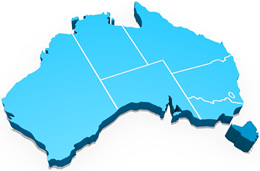
The Palawa people lived on the Bass Strait Islands and Tasmania. They had close, spiritual and ancestral ties to the kangaroo, which they called Tarner and viewed as sacred. When European settlers arrived and hunted kangaroos for food, Aboriginal people defended the Kangaroo as though it were family.
The European settlers also brought many new diseases with them and were often involved in violent clashes with the local Aboriginal people. An Aboriginal woman named Truganini (also known as Trugernanner or Trucanini) was heavily involved in trying to bring peace between Europeans and Aboriginal Australians. She even travelled on expeditions to other Australian colonies to encourage peaceful relations. She died in 1876.

European arrival
The Dutch navigator Abel Tasman discovered Tasmania in 1642. He named it Van Diemen’s Land after the Governor of the Dutch East Indies, Anthony Van Diemen. Little did Tasman know, the state would end up being named after him. On 1 January 1856, not long after convict transportation was abolished, Van Diemen’s Land became Tasmania.
In 1798, the navigator Matthew Flinders sailed with George Bass in a ship called the Norfolk. They circumnavigated Tasmania, proving that it was an island. This was good news for European ships, as it meant they could cut through the Bass Strait (named after George Bass) instead of travelling the whole way around the south of Tasmania.
Tasmania was first settled by the British in 1803. Lieutenant John Bowen arrived on a ship named Lady Nelson with 49 soldiers, settlers and convicts. They originally settled at Risdon on the River Derwent. However, in 1804 they abandoned this settlement for Sullivan’s Cove – the location that would become Hobart under the leadership of Lieutenant Governor David Collins.
Hobart grew as trade increased and local industries, such as sealing, whaling, brewing, shipbuilding and most significantly, the wool industry, emerged.
Tasmania by numbers*
- The population of Tasmania is 519,100.
- Hobart (the capital city of Tasmania) has an estimated population of around 226,464.
- 49 percent of Tasmanians are male and 51 percent are female.
- Aboriginal and Torres Strait Islander people make up 4.6 percent of Tasmania’s population.
- The top five ancestries for people in Tasmania are: English, Australian, Irish, Scottish and German.
- The top five languages (other than English) spoken in Tasmania are: Mandarin, Nepali, German, Greek and Italian.
- The top five countries of birth (other than Australia) for people in Tasmania are: England, New Zealand, China, Netherlands and Germany.
- Tasmania’s area is 68,401 km2, making it Australia’s smallest state. This area accounts for only 0.9 percent of Australia’s total area.
* correct at 2016 Census

State flag and emblems
Flag
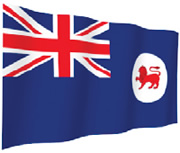
The Tasmanian flag dates back to 1875. As with all Australian state flags the Union Jack appears in the top-left corner of the Tasmanian flag. The flag also features Tasmania’s state badge to the right of the Union Jack. Tasmania’s state badge is a red lion inside a white circle.
Coat of Arms
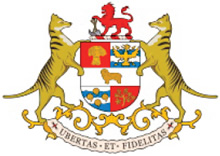
King George V approved Tasmania’s coat of arms on 29 May 1917. The coat of arms features two Tasmanian Tigers supporting a shield. The shield contains symbols of Tasmania’s rural industries: wheat, apples, hops and sheep. Above the shield, there is a red lion. The lion holds a pick and a shovel, symbolising mining. The Latin motto below the shield reads Ubertas et fidelitas meaning ‘Fertility and Faithfulness’.
Emblems
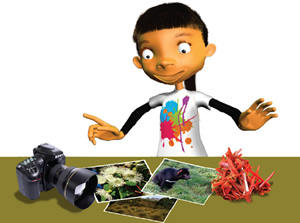
Tasmania’s floral emblem has been the Tasmanian Flowering Blue Gum since 1962. The tree was named by the French naturalist, Labillardière, in 1799.
Tasmania does not have an official animal emblem. Despite this, many view the Tasmanian Devil as the unofficial emblem of Tasmania. The Yellow Wattlebird is also closely identified with Tasmania.
In 2000, Crocoite was named as Tasmania’s state mineral. Crocoite is an orangey-red lead mineral.
Tasmania’s attractions

Tasmania is home to some of Australia’s most spectacular scenery and landscapes. It holds many manmade and natural wonders, some of which are detailed below.
Mount Wellington
Mount Wellington is 1270 metres tall (approximately 4,000 feet). The mountain is home to many different landscapes: rainforest, forest, impressive rock formations and sometimes, snow.
The mountain is the perfect place to hike or enjoy the panoramic views of Hobart, Bruny Island and the Tasman Peninsula. The Aboriginal names for the mountain are Kunanyi, Unghbanyahletta or Poorawetter.
Museum of Old and New Art (MONA)
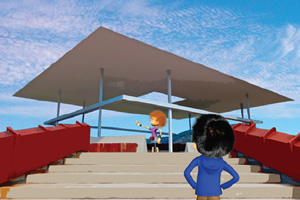
The MONA, at Moorilla on the Derwent River, opened in 2011. It is one of Tasmania’s newest attractions. It took four years to plan and build and cost $75 million. It contains an art collection valued at over $100 million. The museum contains antiques, Australian art and conceptual art.
What is interesting about the museum is that it is built underground. The owner of the museum, David Walsh wanted to disguise the shape and appearance of the building to not give away what is contained inside. He wanted people to have a feeling of excitement as they entered the museum.
The museum’s architecture is groundbreaking, with the space also containing a cemetery, a winery, a bar, a market, a library and a space for musicians and performers.
Tasmania fast facts
- Tasmania is often referred to as the ‘Holiday Isle’ or the ‘Apple Isle’.
- Tasmania is the only Australian state that is an island.
- Measuring only 85 metres across, Tasmania’s border is the shortest border of any Australian state or territory. This border is a land border between Victoria and Tasmania and is a small rocky outcrop in the Bass Strait named Boundary Islet.
- Tasmania’s South East Cape is the most southern point of Australia. It is 3680 km away from Australia’s most northern point, Cape York.
- Crown Princess Mary of Denmark was born Mary Elizabeth Donaldson in 1972 in Hobart. She met her now-husband Crown Prince Frederik of Denmark in Sydney during the 2000 Sydney Olympics.
- The famous cricketer Ricky Ponting is from Tasmania.
- Five of Tasmania’s convict sites, including Port Arthur, are on the UNESCO World Heritage List.
- Tasmania hosts an annual yacht race every Easter, called ‘The Three Peaks’ race. The race incorporates sailing and long distance running. In between each of three legs of the yacht race, one crew member must run 60 metres up a mountain and back again.
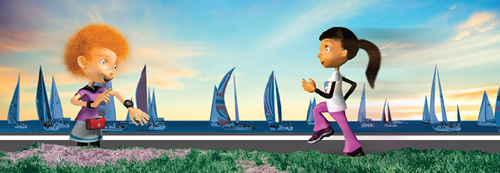
References
The following links will direct you to the homepage of the websites used as references for this topic.
- Australian Bureau of Statistics: www.abs.gov.au
- australia.com: www.australia.com
- australia.gov.au: australia.gov.au




